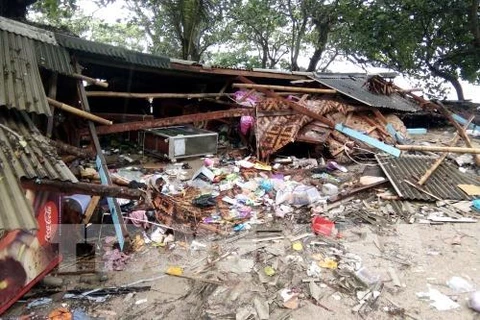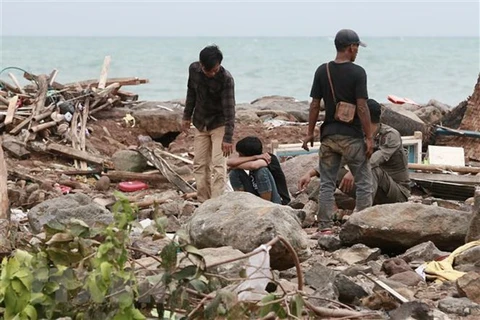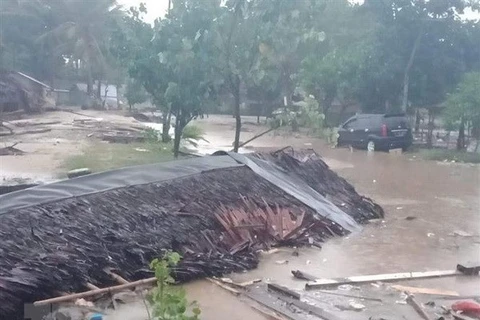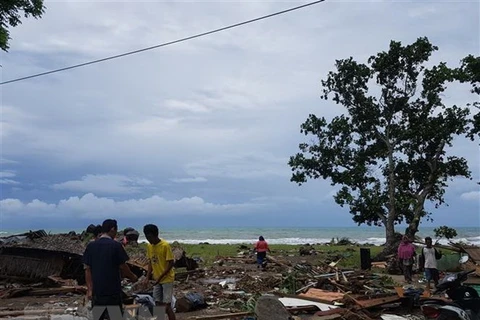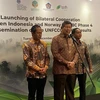Hanoi (VNA) - Indonesian rescuers on December 25 used drones and sniffer dogs to search for survivors along the devastated west coast of Java hit by a tsunami that killed at least 373 people and injured more than 1,400 others.
At least 128 people remain missing and more victims are expected to be uncovered as the search expands.
Thousands of residents had to move to higher ground, with a high-tide warning extended to December 26.
Yusuf Latif, spokesman for the national search and rescue agency said there are several locations that they previously thought were not affected. However, they are now reaching more remote areas as in fact there are many victims there.
Authorities and experts have warned of further high waves and advised residents to stay away from the shoreline.
Since Anak Krakatau has been actively erupting for the past several months additional tsunamis cannot be excluded, said Dr. Prof Hermann Fritz from the Georgia Institute of Technology in the United States.
The tsunami, which came after a volcanic eruption, hit beaches in South Sumatra and the western tip of Java at about 9.30 pm local time on December 22. It caused severe impacts to areas surrounding the Sunda Strait, including beaches in Pangegland, Serang and South Lampung.
Authorities say the tsunami may have been triggered by an abnormal tidal surge due to a new moon and an underwater landslide following the eruption of Anak Krakatoa, which forms a small island in the Sunda Strait between Java and Sumatra.
Indonesia, one of the most disaster-prone nations on earth, straddles the so-called Pacific "Ring of Fire", where tectonic plates collide and a large portion of the world’s volcanic eruptions and earthquakes occur. Anak Krakatau is one of 127 active volcanoes which run the length of the archipelago.
Most recently, a quake and tsunami killed thousands of people in the city of Palu on Sulawesi island in September.
In 2004, a tsunami triggered by a magnitude 9.3 undersea earthquake off the coast of Sumatra in western Indonesia killed 220,000 people in countries around the Indian Ocean, including 168,000 in Indonesia.
President Joko Widodo told disaster agencies to install early warning systems, but experts said that, unlike tsunami caused by earthquakes, little could have been done in time to alert people that waves were coming.-VNA
VNA

